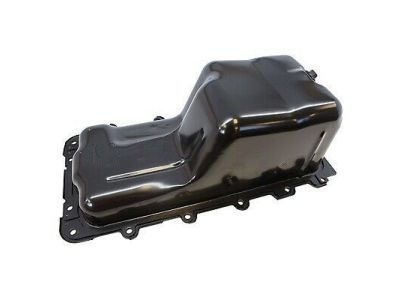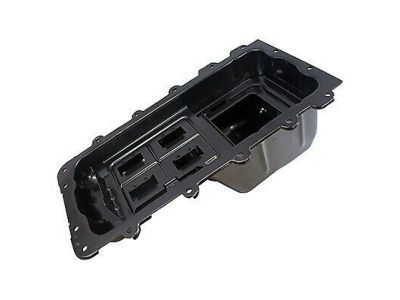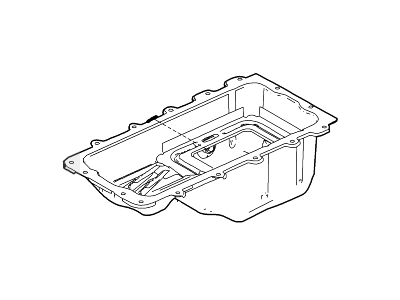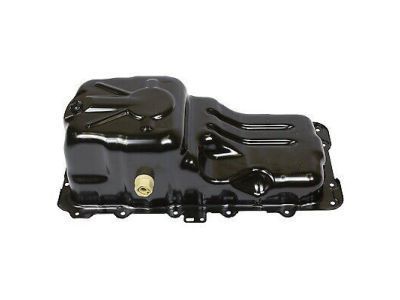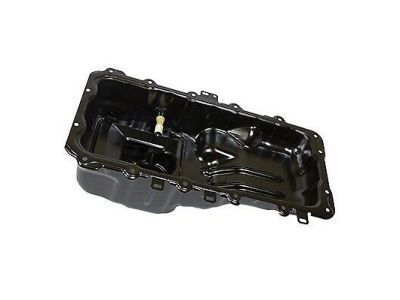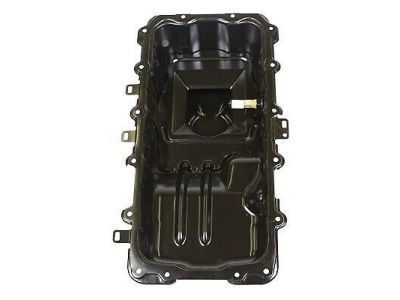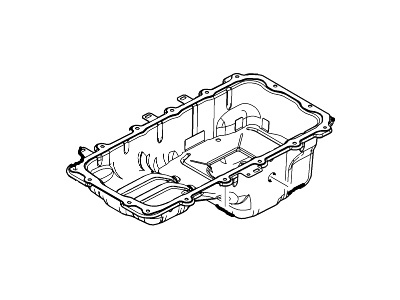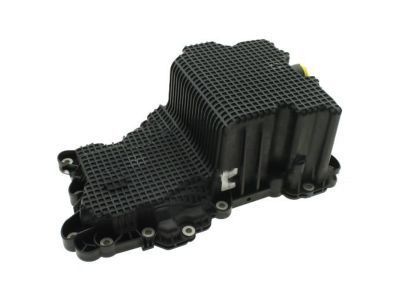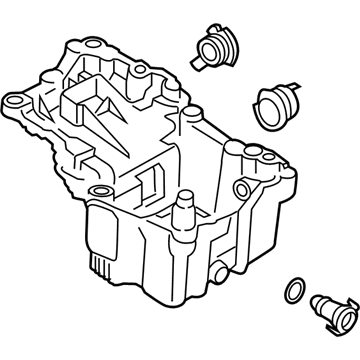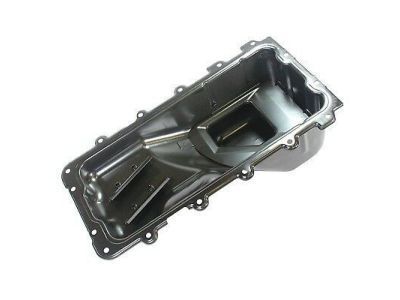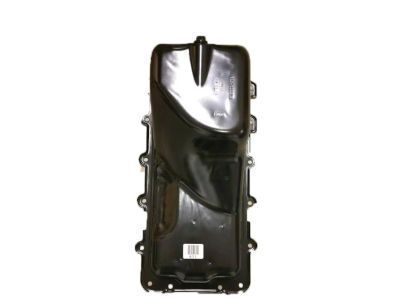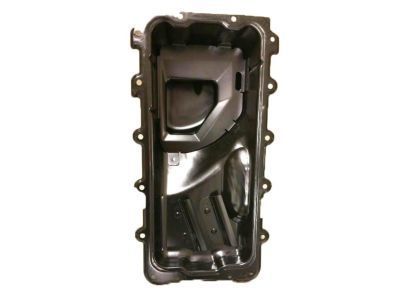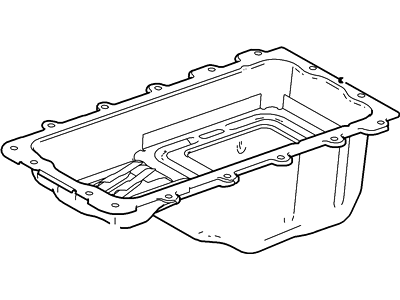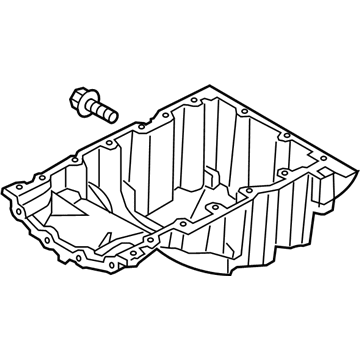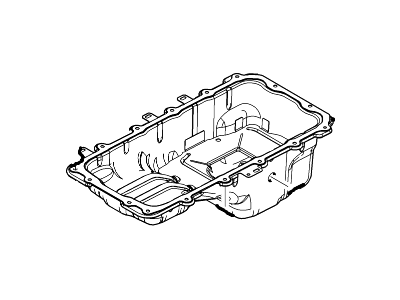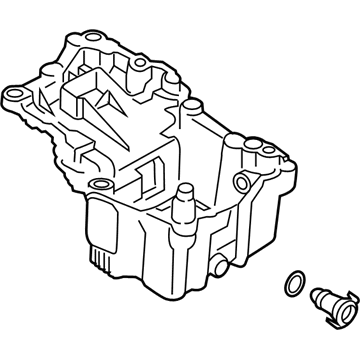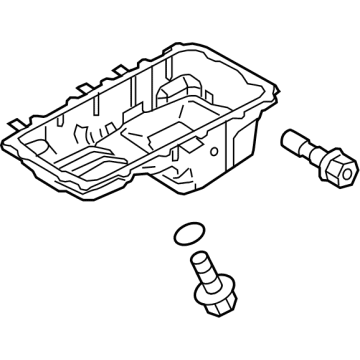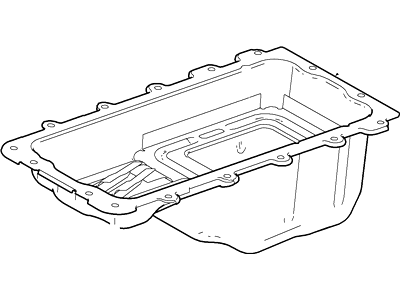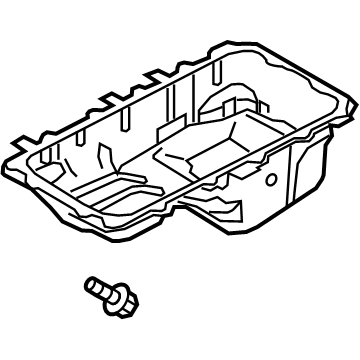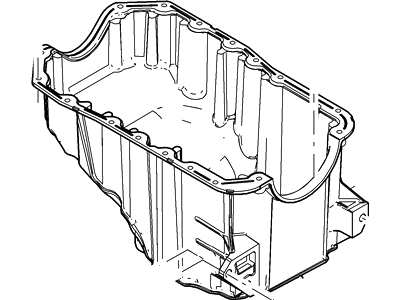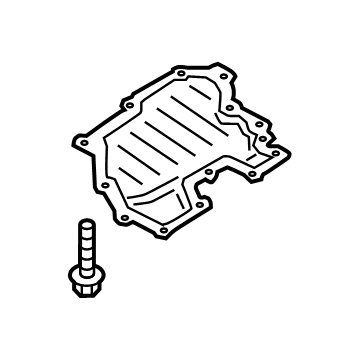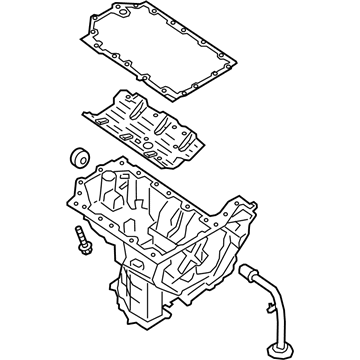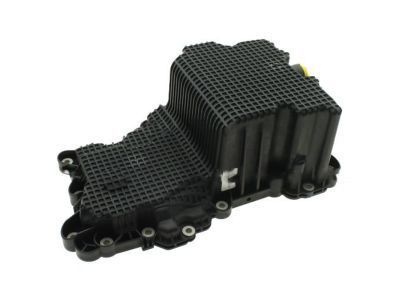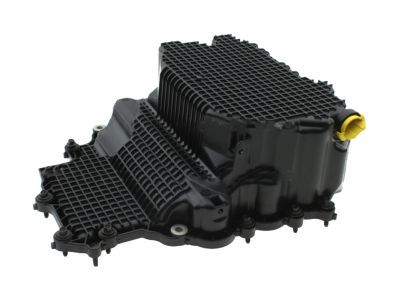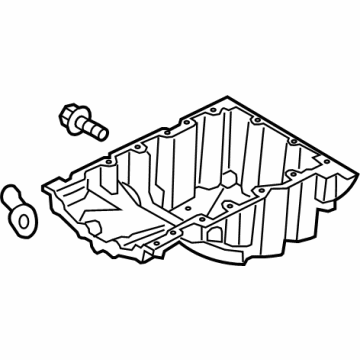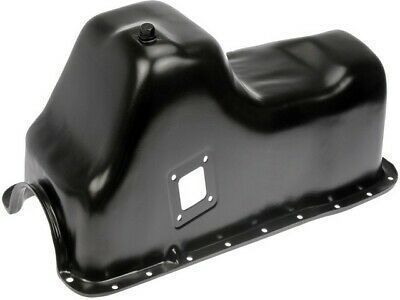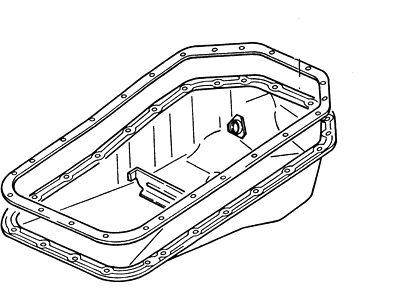

My Garage
My Account
Cart
Genuine Ford F-150 Oil Pan
Oil Drain Pan- Select Vehicle by Model
- Select Vehicle by VIN
Select Vehicle by Model
orMake
Model
Year
Select Vehicle by VIN
For the most accurate results, select vehicle by your VIN (Vehicle Identification Number).
37 Oil Pans found
Ford F-150 Pan Assembly - Engine Oil
Part Number: 9L3Z-6675-A$91.51 MSRP: $133.78You Save: $42.27 (32%)Ford F-150 Pan Assembly - Engine Oil
Part Number: BR3Z-6675-A$79.88 MSRP: $116.78You Save: $36.90 (32%)Ships in 1-2 Business DaysFord F-150 Pan Assembly - Engine Oil
Part Number: FL3Z-6675-A$132.92 MSRP: $194.33You Save: $61.41 (32%)Ford F-150 Pan Assembly - Engine Oil
Part Number: 9L3Z-6675-B$115.32 MSRP: $171.60You Save: $56.28 (33%)Ships in 1-3 Business DaysFord F-150 PAN ASY - ENGINE OIL
Part Number: ML3Z-6675-D$115.45 MSRP: $178.50You Save: $63.05 (36%)Ships in 1-2 Business DaysFord F-150 Pan Assembly - Engine Oil
Part Number: BL3Z-6675-A$77.20 MSRP: $116.97You Save: $39.77 (34%)Ships in 1-2 Business DaysFord F-150 PAN ASY - ENGINE OIL
Part Number: JT4Z-6675-E$122.05 MSRP: $188.70You Save: $66.65 (36%)Ships in 1-2 Business DaysFord F-150 Engine Oil Pan Assembly
Part Number: JR3Z-6675-E$176.81 MSRP: $258.50You Save: $81.69 (32%)Ford F-150 Pan Assembly - Engine Oil
Part Number: XL1Z-6675-CA$148.79 MSRP: $206.69You Save: $57.90 (29%)Ships in 1-2 Business DaysFord F-150 PAN ASY - ENGINE OIL
Part Number: ML3Z-6675-C$132.92 MSRP: $194.33You Save: $61.41 (32%)Ships in 1-2 Business DaysFord F-150 Pan Assembly - Engine Oil
Part Number: 3L3Z-6675-CA$83.12 MSRP: $128.52You Save: $45.40 (36%)Ships in 1-3 Business DaysFord F-150 PAN ASY - ENGINE OIL
Part Number: ML3Z-6675-G$97.56 MSRP: $150.83You Save: $53.27 (36%)Ships in 1-2 Business DaysFord F-150 Pan Assembly - Engine Oil
Part Number: JL3Z-6675-C$48.11 MSRP: $69.12You Save: $21.01 (31%)Ships in 1-3 Business DaysFord F-150 STIFFENER
Part Number: JL3Z-6K040-B$304.59 MSRP: $476.67You Save: $172.08 (37%)Ships in 1-3 Business DaysFord F-150 Pan Assembly - Engine Oil
Part Number: XL3Z-6675-DA$83.12 MSRP: $128.52You Save: $45.40 (36%)Ships in 1-3 Business DaysFord F-150 Pan Assembly - Engine Oil
Part Number: JL3Z-6675-B$176.81 MSRP: $258.50You Save: $81.69 (32%)Ford F-150 Pan Assembly - Engine Oil
Part Number: F65Z-6675-CB$165.01 MSRP: $229.23You Save: $64.22 (29%)Ships in 1-2 Business DaysFord F-150 Pan Assembly - Engine Oil
Part Number: FL3Z-6675-B$109.55 MSRP: $160.17You Save: $50.62 (32%)Ford F-150 Pan Assembly - Engine Oil
Part Number: HL3Z-6675-A$99.32 MSRP: $145.20You Save: $45.88 (32%)
| Page 1 of 2 |Next >
1-20 of 37 Results
Ford F-150 Oil Pan
The Oil Pan is used in Ford F-150 to hold the engine oil for provision adequate lubrication for moving parts in the car. For most of the F-150 models, there is the wet sump system that entails an oil pan below the engine where the oil pump draws the oil and circulates the same within the engine. This design aid in the proper continuous lubrication as well as cooling of components within the engine. Traditionally, F-150 oil pans were built with stamped steel, but progress has changed and cast aluminum is used on many of today's engines. It is possible to conclude that the evolution of the materials in this context increases durability and efficiency. As for the wet sump system, the oil pan geometry should be such that at any given driving conditions the oil cannot surge or be cut off from the pump. In general, the Ford F-150 oil pan plays a critical role in the vehicle's functioning and durability of the engine.
We provide a wide range of Ford F-150 Oil Pan at the best prices possible. If you need Ford F-150 Oil Pan, you can shop with confidence on our website. All our OEM parts come with a manufacturer's warranty and are delivered to your door step with a fast delivery service.
Ford F-150 Oil Pan Parts Questions & Experts Answers
- Q: How to remove and install an oil pan in 4.2L V6 engine on Ford F-150?A:Disconnect the cable from the negative battery terminal, remove the oil dipstick, drain the engine oil, and remove the oil filter. Raise the vehicle and secure it on jackstands, then remove the crossmember bolts and the crossmember. Take out the Engine Mount through-bolts and raise the engine about two inches with an engine hoist properly attached to the lifting brackets, avoiding the use of a jack under the oil pan to prevent damage. Remove the oil pan-to-transmission bolts and the oil pan-to-engine bolts, then take off the oil pan, breaking the seal if necessary with a thin putty knife while ensuring not to gouge the sealing edge. Empty any residual oil from the pan and clean it with solvent. For installation, use a gasket scraper or putty knife to remove old gasket material and sealant from the pan and engine block, clean the mating surfaces, and use gasket adhesive to hold the rear rubber seal in place. Stick the side gaskets on the engine block with adhesive and apply RTV sealant at the corners where the side gaskets meet the end seals. Create alignment dowels from two long bolts, apply a bead of sealant on the block and front cover, and ensure the oil pan is installed within 15 minutes to prevent the sealant from hardening. Position the pan against the engine block, install the bolts finger tight, and then tighten them in the correct sequence, replacing the alignment studs with pan bolts. Complete the remaining steps in reverse order, remembering to add engine oil and install a new oil filler. Start the engine and check for oil leaks at the oil pan, then drive the vehicle and check again.
Related Ford F-150 Parts
Browse by Year
2023 Oil Pan 2022 Oil Pan 2021 Oil Pan 2020 Oil Pan 2019 Oil Pan 2018 Oil Pan 2017 Oil Pan 2016 Oil Pan 2015 Oil Pan 2014 Oil Pan 2013 Oil Pan 2012 Oil Pan 2011 Oil Pan 2010 Oil Pan 2009 Oil Pan 2008 Oil Pan 2007 Oil Pan 2006 Oil Pan 2005 Oil Pan 2004 Oil Pan 2003 Oil Pan 2002 Oil Pan 2001 Oil Pan 2000 Oil Pan 1999 Oil Pan 1998 Oil Pan 1997 Oil Pan 1996 Oil Pan 1995 Oil Pan 1994 Oil Pan 1993 Oil Pan 1992 Oil Pan 1991 Oil Pan 1990 Oil Pan 1989 Oil Pan 1988 Oil Pan 1987 Oil Pan 1986 Oil Pan 1985 Oil Pan 1984 Oil Pan 1983 Oil Pan 1982 Oil Pan 1981 Oil Pan 1980 Oil Pan
